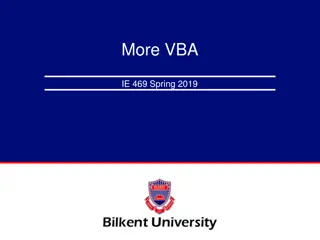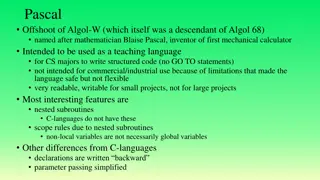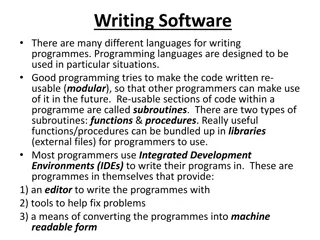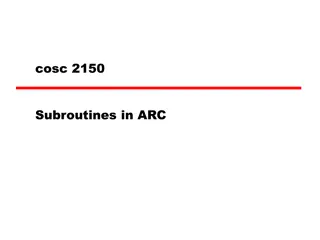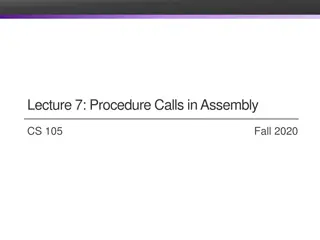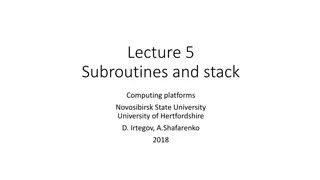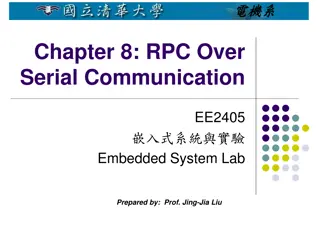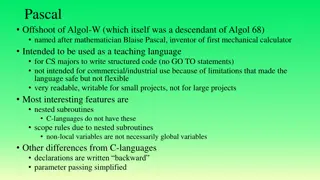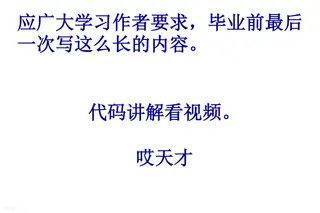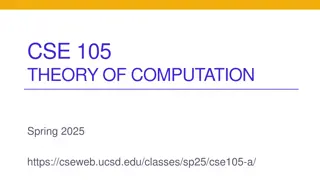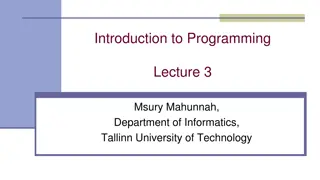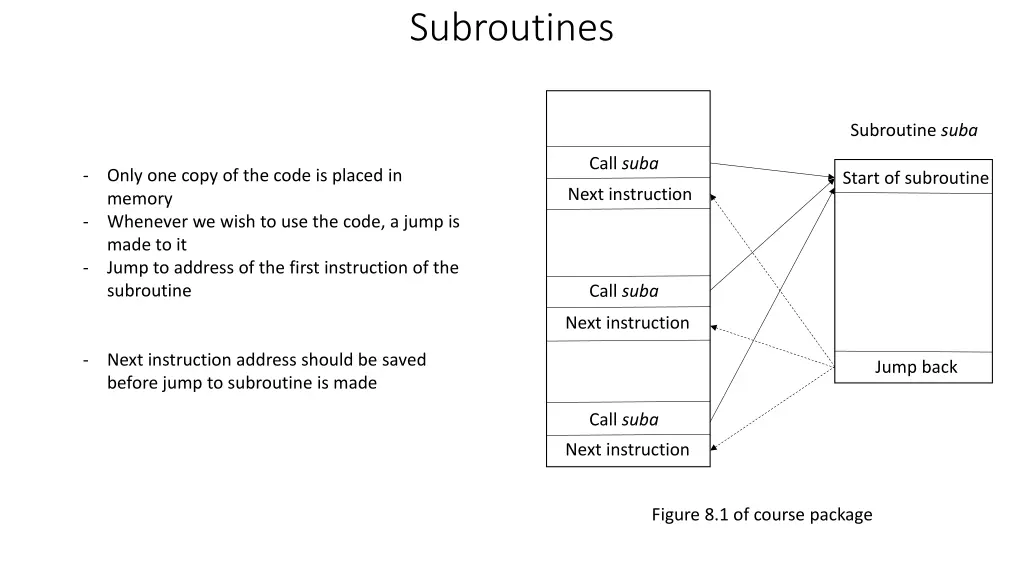
Efficient Subroutine Usage in Memory Management
Discover how subroutines optimize memory usage by storing code once and jumping to it as needed. Learn about subroutine calls, returns, and nested subroutines, along with the importance of link registers and stack usage. Explore examples and best practices for calling subroutines efficiently in programming.
Download Presentation

Please find below an Image/Link to download the presentation.
The content on the website is provided AS IS for your information and personal use only. It may not be sold, licensed, or shared on other websites without obtaining consent from the author. If you encounter any issues during the download, it is possible that the publisher has removed the file from their server.
You are allowed to download the files provided on this website for personal or commercial use, subject to the condition that they are used lawfully. All files are the property of their respective owners.
The content on the website is provided AS IS for your information and personal use only. It may not be sold, licensed, or shared on other websites without obtaining consent from the author.
E N D
Presentation Transcript
Subroutines Subroutine suba Call suba - Only one copy of the code is placed in memory Whenever we wish to use the code, a jump is made to it Jump to address of the first instruction of the subroutine Start of subroutine Next instruction - - Call suba Next instruction - Next instruction address should be saved before jump to subroutine is made Jump back Call suba Next instruction Figure 8.1 of course package
Subroutine calls and returns main equ * ; ; Subroutine suba ; suba knows the symbols x and save_return ; ; first call ; move.l #next1, save_return ; save return address jmp suba ; jump to subroutine suba equ move.w x,d0 muls move.w d0,x lea jmp * next1 .. ; this is where we continue .. d0,d0 ; ; second call save_return,a0 (a0) ;put the correct ;return address ;into a0 ;return ; move.l #next2, save_return ; save return address jmp suba ; jump to subroutine next2 .. ; this is where we continue .. ;end of subroutine ; ; third call save_return ds.l 4 ;storage for return address ; move.l #next3, save_return ; save return address jmp suba ; jump to subroutine Four extra instructions to implement subroutine. Programmer must explicitly save the return address before jumping to subroutine next3 .. ; this is where we continue ;
Figure 2.24 [Hamacher] Subroutine linkage using a link register Memory location Calling program 200 204 Memory location Subroutine SUB --- --- --- Call SUB next instruction ---- ---- 1000 First instruction ---- ---- Return Here, address of next instruction must be saved by the Call instruction to enable returning to Calling program 1000 PC 204 Note: Link Register is dedicated to save return address Link Register 204 204 Call Return
Nested subroutines One subroutine calling another - if link register is used, its previous contents will be destroyed - it is therefore important to save it in some other location Stack should be used - list of similar items arranged in a structure, such that last item added is the first item removed Last-in-First-out - Push an element onto stack - Pop an element from stack to remove - elements are either word or longwords Call instruction push address of next instruction Return pop return address Stack Pointer originally points to the beginning of the block of memory (Fig 8.2)
How to Call Subroutine Two instructions jsr, bsr Jump to subroutine jsr address (ex. jsr suba) operand is the Effective Address (specified as absolute address) - Longword address of the next instruction is pushed on to the stack - Stack is implicitly used when calling subroutines - The EA specified is then used to jump to the subroutine Equivalent machine instruction is (see Fig 8.3): 4EB9 0040 0100
How to Call Subroutine Two instructions jsr, bsr Branch to subroutine bsr.b address Same as jsr, except signed displacement is added to PC bsr.w address (ex. bsr suba) Equivalent machine instruction is (see Fig 8.3): (bsr.b) 617E or (bsr.w) 6100 007E Machine instruction contains displacement, calculated using: Target address = PC + 2 + displacement
Return from Subroutine Two ways rts, rtr Return from subroutine rts - top of stack is popped off and loaded into PC Return and Restore rtr - first pops a word from stack placing its low byte into CCR - PC is loaded with next two words popped (condition code register) If rtr is used to return, the subroutine should do the following immediately upon entry to subroutine: move.w SR, -(SP)
Ex: Calling and Returning from suba main ; ; code to make call ; jsr next1 . . jsr next2 . . jsr next3 . ; equ * ; code of subroutine suba, notice that ; suba knows the symbol x ; suba equ * move.w x,d0 muls d0,d0 move.w d0, x rts ; ; end of subroutine suba . . suba . . suba . ; first call ; this is where we continue after return ;entry point ; second call ; this is where we continue after return ; third call ; this is where we continue after return

